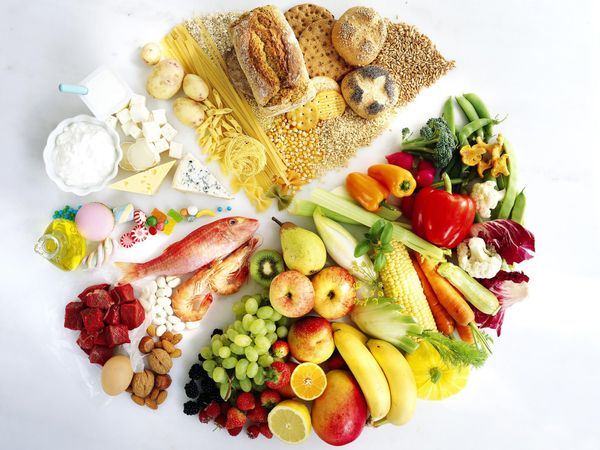Although the word “fasting” sounds scary, intermittent fasting (IF) is taking the diet world by storm. With a decent amount of research on the diet’s positive impact on body weight, cognition, and blood sugar, it’s no wonder that everyone you know seems to be jumping on the IF bandwagon. Maybe the appeal is the lack of food rules. There are restrictions on when you can eat, but not necessarily what you can eat. So should you be downing pints of ice cream and bags of chips while intermittent fasting? Probably not. That’s why we’ve come up with a list of the best foods to include in your IF life.
IF Refresher
Here’s a little refresher for the new students in class. There are multiple IF plans, but most focus on fasting for a certain number of hours in the day or days of the week. Here’s a breakdown of the most popular IF models:
12:12 Method
Fast for 12 hours a day and eat within a 12-hour window. If you eat your last meal at 7 p.m. and have breakfast the next morning at 7 a.m., congratulations, you’re already an IF pro. (This is good for beginners.)
Fast for a full 20 hours and allow yourself one four-hour window to eat.
16:8 Method
Eat your daily food within an 8-hour window and fast for the remaining 16 hours.
5:2 Method
Eat whatever you want for 5 days out of the week. For the other two days, men can consume 600 calories, while women can consume 500 calories.
“There are no specifications or restrictions about what type or how much food to eat while following intermittent fasting,” says Lauren Harris-Pincus, MS, RDN, author of The Protein-Packed Breakfast Club. But “the benefits [of IF] are not likely to accompany consistent meals of Big Macs,” says Mary Purdy, MS, RDN, chair of Dietitians in Integrative and Functional Medicine.
Both Pincus and Purdy agree that a well-balanced diet is the key to losing weight, maintaining energy levels, and sticking with the diet. “Anyone attempting to lose weight should focus on nutrient-dense foods, like fruits, veggies, whole grains, nuts, beans, seeds, as well as dairy and lean proteins,” Pincus says.
Purdy adds, “My recommendations wouldn’t be very different from foods that I might normally suggest for improved health—high-fiber, unprocessed, whole foods that offer variety and flavor.” In other words, eat plenty of the below foods and you won’t end up in a hangry rage while fasting.
1. Water
Even though you aren’t eating, it’s important to stay hydrated for so many reasons, like the health of basically every major organ in your body. The amount of water that any one person should drink varies, but you want your urine to be a pale yellow color at all times. Dark yellow urine indicates dehydration, which can cause headaches, fatigue, and lightheadedness. Couple that with limited food, and it could be a recipe for disaster. If the thought of plain water doesn’t excite you, add a squeeze of lemon juice, a few mint leaves, or cucumber slices to your water. It’ll be our little secret.
2. Avocado
It may seem counterintuitive to eat the highest calorie fruit while trying to lose weight, but the monounsaturated fat in avocado is extremely satiating. A study even found that adding a half of an avocado to your lunch may keep you full for hours longer than if you didn’t eat the green gem.
3. Fish
There’s a reason the Dietary Guidelines suggests eating at least eight ounces of fish per week. Not only is it rich in healthy fats and protein, it also contains ample amounts of vitamin D. And if you’re only eating a limited amount of food throughout the day, don’t you want one that delivers more nutrient-bang for your buck? Not to mention that limiting your calorie intake may mess with your cognition, and fish is often considered a “brain food.”
4. Cruciferous Veggies
Foods like broccoli, Brussels sprouts, and cauliflower are all full of the f-word—fiber. When you’re eating erratically, it’s crucial to eat fiber-rich foods that will keep you regular and prevent constipation. Fiber also has the ability to make you feel full, which is something you may want if you can’t eat again for 16 hours. Woof.
5. Potatoes
Repeat after me: Not all white foods are bad. Case in point: Studies have found potatoes to be one of the most satiating foods around. Another study found that eating potatoes as part of a healthy diet could help with weight loss. Sorry, French fries and potato chips don’t count.
5. Beans and Legumes
Your favorite addition to chili may be your best friend on the IF lifestyle. Food, specifically carbs, supplies energy for activity. While we’re not telling you to carbo-load, it definitely wouldn’t hurt to throw some low-calorie carbs, like beans and legumes, into your eating plan. Plus, foods like chickpeas, black beans, peas, and lentils have been shown to decrease body weight, even without calorie restriction.
6. Probiotics
You know what the little critters in your gut like the most? Consistency and diversity. That means they aren’t happy when they’re hungry. And when your gut isn’t happy, you may experience some irritating side effects, like constipation. To counteract this unpleasantness, add probiotic-rich foods, like kefir, kombucha or kraut, to your diet. The Farmhouse Culture Gut Shots are perfect for any 500-calorie days, since each 1.5-ounce shot is brimming with live probiotics (10 billion CFUs) for just 10 calories.
7. Berries
Your favorite smoothie addition is ripe with vital nutrients. Strawberries are a great source of immune-boosting vitamin C, with more than 100 percent of the daily value in one cup. And that’s not even the best part—a recent study found that people who consumed a diet rich in flavonoids, like those in blueberries and strawberries, had smaller increases in BMI over a 14-year period than those who did not eat berries.
8. Eggs
One large egg has six grams of protein and cooks up in minutes. Getting as much protein as possible is important for keeping full and building muscle. One study found that men who ate an egg breakfast instead of a bagel were less hungry and ate less throughout the day. In other words, when you’re looking for something to do during your fasting period, why not hard-boil some eggs?
9. Nuts
They may be higher in calories than many other snacks, but nuts contain something that most junk food doesn’t—good fat. Research suggests that polyunsaturated fat in walnuts can actually alter the physiological markers for hunger and satiety.
And if you’re worried about calories, don’t be! A 2012 study found that a one-ounce serving of almonds (about 23 nuts) has 20 percent fewer calories than listed on the label. Basically, the chewing process does not completely break down the almond cell walls, leaving a portion of the nut intact and unabsorbed during digestion.
10. Whole Grains
Being on a diet and eating carbs seem like they belong in two different buckets, but not always! Whole grains are rich in fiber and protein, so eating a little goes a long way in keeping you full. Plus, a new study suggests that eating whole grains instead of refined grains may actually rev up your metabolism. So go ahead and eat your whole grains and venture out of your comfort zone to try farro, bulgur, spelt, kamut, amaranth, millet, sorghum, or freekeh.
By Natalie Rizzo
Source: greatist.com







Leave A Comment
You must be logged in to post a comment.